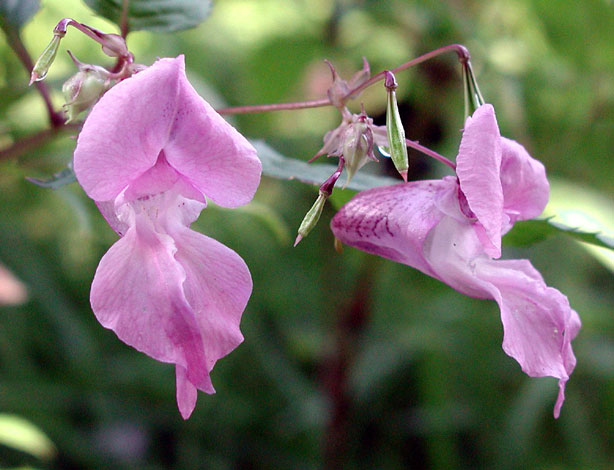Impatiens glandulifera Indian or Himalayan Balsam I

When in full flower this introduction from the Himalayas looks magnificent and you can well imagine that people would have wanted it for their gardens at one time. It spreads along waterways, in the first instance along our canal system but now you find it along stream and riversides almost anywhere in the UK. It has certainly become a nuisance in places but with its explosive seed pods and superb germination rate we've got it for good now.
I. glandulifera is assumed to be an invasive species which needs to be treated as a threat to biodiversity and looking at stands of this plant on river banks or in damp woods, where it grows taller than any other British annual, you can well believe it. Yet there is evidence in the literature that the threat is more assumed than real and researched. In the British Isles for example it is well established in England and Wales but in Scotland is associated with the urban areas around the Glasgow- Edinburgh belt. In the highlands and the north it is not prevalent at all. For more details see BSBI news January 2011.
In Ireland it is established in the north and south but no so much in the less populated centre. Comparing the distribution of this alien plants with some natives such as Senecio jacobaea (Ragwort), Urtica dioica (Stinging Nettle) or even Hypericum pulchrum (Slender St. John's-wort), I. glandulifera has yet to spread as far as these in the whole of these islands but perhaps the worry is that eventually it will and being an alien, without natural biological checks on its progress. The important thing with such introductions is to ask the question: what scientific evidence is there (in peer-reviewed journals) for the assumptions made about its ecological impact and are there contrary studies?
Helsby, Cheshire 29th September 2004
Added on 28th October 2004, amended January27th 2005, updated December 17th 2009, updated 13th April 2010, updated 10th Feb 2011



